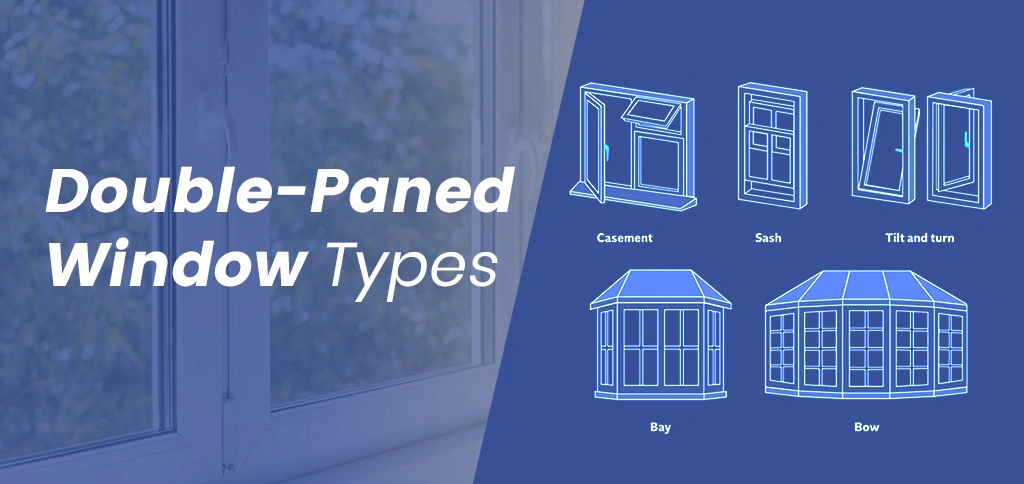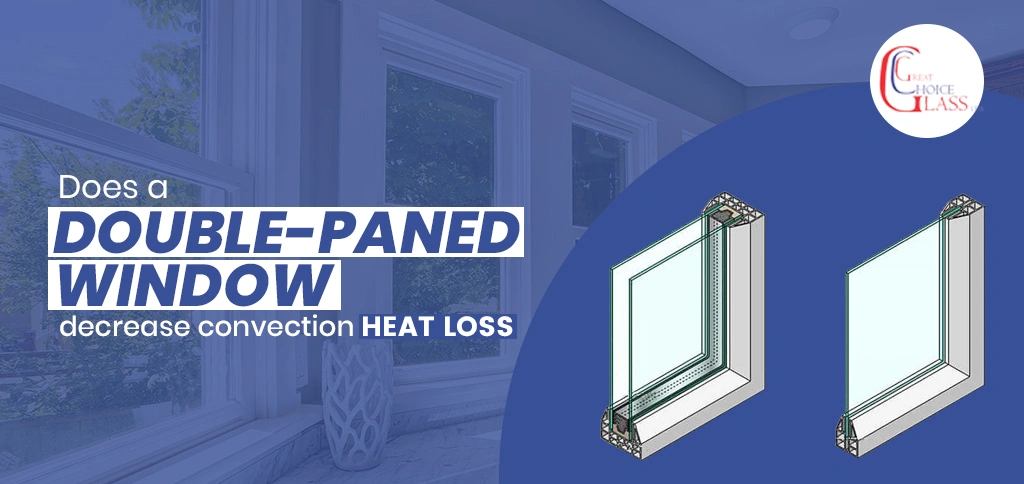Double-paned windows consist of two layers of glass that work to reduce heat loss, with an air space in between. This gap is a barrier, stopping heat from escaping and cold air from entering. Double-paned windows insulate your home, decrease conventional heat loss, and improve energy efficiency.
Efficient Double paned Reduces Heat Loss
Most homeowners replace their windows with double-paned for heat retention reasons. Double-paned windows prevent heat loss, allow the home to remain warm, and reduce overall heating bills. This blog is all about how double-paned windows reduce heat loss. We will also explain the different types of double-paned windows and their benefits.
Double-paned reduces the total heat loss through windows by limiting how much heat can escape by two terms:
- Conduction
- Convection
Conduction is the term used when heat is transferred through a material. The heat hits the glass and then transfers through the window panel to the outside environment. In single-paned, the heat hits the piece of glass, which penetrates and reduces the warmth of a room. But double paned prevents this process. The conducted heat cannot be transferred directly to the outside, but it can transfer to the air gap between the two panes of glass. This is when convection occurs.
Convection is the term used when heat is transferred via a moving liquid or gas. Air or argon gas is present between the two panes of glass. When air is used, it acts more like a block, as air is a poor conductor. When argon gas is used as an insulator between the two panes of glass, it makes your home warmer. So, when it comes to reducing heat loss, double-paned is far more effective than single glazing.
Double-Paned Window Types

Here are some different types of double-paned windows which are given below:
1. Double-paned Units (DPUs)
Double-paned units consist of two glass panes separated by a gap filled with air or a gas, such as argon or krypton. This is the most basic form of double paned and improves insulation compared to single glazing.
2. Low-E glass
Low-emissivity (Low-E) glass has a special coating that helps to reflect heat back into the room. It also reduces heat loss and improves energy efficiency. It allows natural light to enter but minimizes harmful UV radiation.
3. Acoustic double paned
Acoustic double-paned windows are designed to reduce noise transmission and make them suitable for properties located in noisy areas. They have thicker glass panes and a wider air gap that enhances sound insulation.
4. Triple paned
Triple-paned consists of three glass panes and two insulating gaps. It provides an extra layer of insulation compared to double-glazing. It improves thermal efficiency and noise reduction, but it can be more expensive than standard double-paned.
5. Secondary paned
Secondary glazing adds an additional pane of glass to the existing window rather than replacing the whole unit. Some benefits of secondary glazing include improved insulation and noise reduction, and it can be a cost-effective solution for older properties.
6. Slimline double paned
Slimline double-paned windows are specially designed for properties with narrow window frames and for those seeking a more aesthetic appearance. They use thinner glass panes and narrower air gaps while still providing effective insulation.
7. Self-cleaning glass
Self-cleaning double-paned glass has a special coating that uses sunlight to break down and wash away dirt, reducing the need for manual cleaning.
Advantages of Double-Paned Windows

- Help you save on energy bills.
- Double-paned boosts the soundproofing of your home
- They Improve your security
- Double-paned can reduce interior fading
- Double-paned can help increase property value
- Double-paned help to reduce noise
- Stops Dampness and Condensation.
- Easy Maintenance and better Appearances.
- It is Eco-friendly
- Give an aesthetic look
- Not have common glass problems
Disadvantages of Double-paned windows
- Double paned windows and doors can trap heat
- Double paned windows cannot be repaired.
- They might not be a good match for homes with older architectural styles.
- Double paned can cost more initially.
- Decreased Natural Light Through Windows
- Very Expensive


